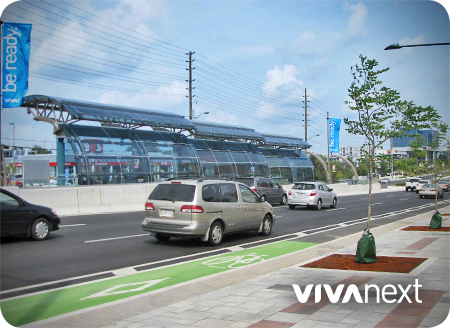When looking at the award winning rapidway on Highway 7 in Richmond Hill and Markham, or Davis Drive in Newmarket, you’ll notice some features that make them different from your average street.
Wider sidewalks, more accessibility features, large attractive tree planters to provide a buffer between pedestrians and traffic, and bike lanes where possible, are all part of York Region’s urban design philosophy. It’s an approach that will shape the future of our communities and neighbourhoods, and it’s what Urban Planners call a ‘complete street’ – a street designed for everyone.
The complete street transformation is starting to unfold on Yonge Street in Richmond Hill and Newmarket this year. Utilities are being relocated to accommodate the dedicated bus rapid transit lanes in the centre of the road. In time, the same thoughtful and elegant elements will take shape on one of the region’s most important roads for transportation, commerce and entertainment – the perfect place to stop, shop and dine – Yonge Street!
The complete street approach ensures that planners and engineers design and manage public infrastructure that takes in account users of all ages, abilities, and modes of travel.
One of the underpinnings of the complete street approach is to treat roads as destinations. With careful planning, roads can be public spaces with lush greenery and design features that engage people. Streets can be places to go instead of just surfaces to drive on. They should connect to businesses and places where people live, and also to trails, parks and other gathering places in order to help build a sense of community.
Another key consideration is accessibility, because whether you get around in a stroller, wheelchair, on transit, walking, cycling or driving, everyone needs safe and convenient options.
To learn more about complete streets and how they are being implemented across Canada and around the world, visit completestreetsforcanada.ca, or smartgrowthamerica.org.

